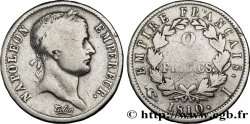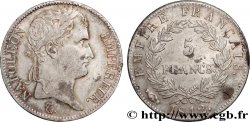Live auction - fme_1066618 - PREMIER EMPIRE / FIRST FRENCH EMPIRE Médaille, Bataille d’Austerlitz, refrappe
You must signin and be an approved bidder to bid, LOGIN TO BID. Accounts are subject to approval and the approval process takes place within 48 hours. Do not wait until the day a sale closes to register. Clicking on "BID" constitutes acceptance of the terms of use of cgb.fr private live auctions.
Bids must be placed in whole Euro amounts only. The sale will start closing at the time stated on the item description; any bids received at the site after the closing time will not be executed. Transmission times may vary and bids could be rejected if you wait until the last second. For further information check the Live auction FAQ
All winning bids are subject to a 18% buyer’s fee.
All winning bids are subject to a 18% buyer’s fee.
Type : Médaille, Bataille d’Austerlitz, refrappe
Date: (1805)
Mint name / Town : Monnaie de Paris
Quantity minted : ---
Metal : bronze
Diameter : 40,5 mm
Orientation dies : 12 h.
Engraver ANDRIEU Jean-Bertrand (1761-1822) - DENON Dominique Vivant (1747-1825)
Weight : 30,90 g.
Edge : lisse + corne BRONZE
Puncheon : corne BRONZE
Coments on the condition:
Patine marron hétérogène avec des marques d’usure sur certains hauts reliefs. Présence de quelques rayures
Catalogue references :
Obverse
Obverse legend : BATAILLE - D’AUSTERLITZ // À L’EXERGUE : II. DECEMBRE/ MDCCCV..
Obverse description : Tête laurée de Napoléon à droite, signé sur le tranché du cou : ANDRIEU F..
Reverse
Reverse legend : ALEXANDRE I. - FRANCOIS II.
Reverse description : Bustes laurés et affrontés d’Alexandre de Russie et de François d’Autriche; signé : ANDRIEU.F DENON F..
Commentary
La bataille d’Austerlitz, surnommée la « bataille des Trois Empereurs », se déroule le 2 décembre 1805 au sud de la Moravie (République tchèque), et plus précisément entre Brünn et Austerlitz. Après neuf heures de combats, la Grande Armée de Napoléon bat les forces autrichiennes de l’empereur François Ier et celle du tsar Alexandre. L'Angleterre, bien qu'invaincue, reste seule, ce qui met fin à la troisième coalition. Outre son importance stratégique, cette bataille est considérée comme le chef d'œuvre tactique de Napoléon, et, est encore enseignée de nos jours dans de nombreuses écoles militaires. C’est, en effet, la seule bataille où Napoléon a pu choisir le terrain, y amener l'ennemi et lui imposer son plan : les autres ont été soit des batailles de rencontre plus ou moins improvisées (Marengo, Iéna, Eylau, Lutzen, Dresde), soit des forcements de positions où l'ennemi préféra attendre l'Empereur (Friedland, Wagram, la Moskowa).
The Battle of Austerlitz, nicknamed the \\\"Battle of the Three Emperors,\\\" took place on December 2, 1805, in southern Moravia (Czech Republic), more precisely between Brünn and Austerlitz. After nine hours of fighting, Napoleon's Grande Armée defeated the Austrian forces of Emperor Francis I and Tsar Alexander. England, although undefeated, remained alone, thus ending the Third Coalition. In addition to its strategic importance, this battle is considered Napoleon's tactical masterpiece and is still taught today in many military schools. It is, in fact, the only battle where Napoleon was able to choose the terrain, bring the enemy there and impose his plan on him: the others were either more or less improvised encounter battles (Marengo, Jena, Eylau, Lutzen, Dresden), or forcing of positions where the enemy preferred to wait for the Emperor (Friedland, Wagram, Moskowa)
The Battle of Austerlitz, nicknamed the \\\"Battle of the Three Emperors,\\\" took place on December 2, 1805, in southern Moravia (Czech Republic), more precisely between Brünn and Austerlitz. After nine hours of fighting, Napoleon's Grande Armée defeated the Austrian forces of Emperor Francis I and Tsar Alexander. England, although undefeated, remained alone, thus ending the Third Coalition. In addition to its strategic importance, this battle is considered Napoleon's tactical masterpiece and is still taught today in many military schools. It is, in fact, the only battle where Napoleon was able to choose the terrain, bring the enemy there and impose his plan on him: the others were either more or less improvised encounter battles (Marengo, Jena, Eylau, Lutzen, Dresden), or forcing of positions where the enemy preferred to wait for the Emperor (Friedland, Wagram, Moskowa)








 Live starting :
Live starting :  Report a mistake
Report a mistake Print the page
Print the page Share my selection
Share my selection Ask a question
Ask a question Consign / sell
Consign / sell
 Full data
Full data















